Pumps & Systems, March 2013
An international technology group supplies equipment and services for hydropower stations, the pulp and paper industry, solid/liquid separation in the municipal and industrial sectors, the steel industry and the production of animal feed and biomass pellets. The company, headquartered in Graz, Austria, operates more than 180 production sites and service and sales companies worldwide.
The pump division develops and manufactures customized large pumps and standard centrifugal pumps for a wide range of applications and industries, such as:
- Water transport and irrigation
- Energy sector (cooling water and flue gas desulfurization pumps)
- Pulp and paper, sugar and bioethanol industries
Many years of experience in hydraulic machinery construction and comprehensive process knowledge form a solid footing for the performance standards met by these pumps. The company is a single-source supplier—including development, model tests, design, manufacture, project management, and after-sales service and training.
Design Procedure
The pump manufacturer has developed a modern design system that consists of computer-aided-design-based geometry definition, hydraulic optimization by means of numerical flow simulation and analysis of mechanical behavior.
For an initial impeller or guide vane design, TURBOdesign1 (design software) is extensively used within the company. The software provides good solutions in a short time period, especially when starting from scratch.
The hydraulic behavior is then evaluated by solving the full 3D-Navier-Stokes equations in combination with a robust turbulence model. Based on the initial design software solution, the blade profile is further optimized by experienced designers and interaction with the stationary components, such as the casing, must be tuned. Finally, the progress in hydraulic design is verified by model test results.
Application of the Software to Pump Design
Two years ago, the software was introduced to the pump manufacturer for hydraulic development of a new vertical line shaft pump (see Figure 1). This pump type is typically used for irrigation and cooling water supply to thermal power plants.
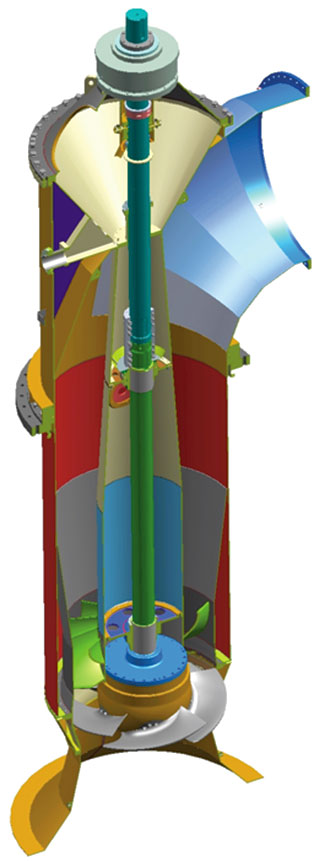
Figure 1. Pump assembly model of a vertical line shaft pump with adjustable impeller blades
Because of changing requirements, the pump’s operating range had to be shifted to higher flow rates and higher heads. Therefore, the company needed to develop new runner blades and new guide vanes. The hydraulic designs were verified by computational fluid dynamics (CFD), including all flow-relevant components (see Figure 2).
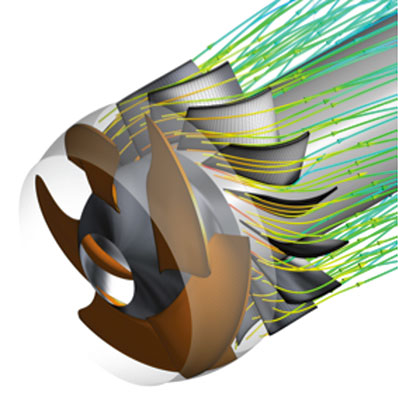
Figure 2. CFD pump model
Results
An extensive series of measurements was carried out in the pump company’s in-house hydraulic laboratory on a fully homologous model. These experiments provided:
- Performance data (flow rate, head, power and efficiency)
- Cavitation observations
- Hydraulic forces (axial thrust, radial force and momentum)
- Stability limits (for example, pressure pulsations)
Compact Design
Compared to the old reference pump, the new design was smaller and had significantly higher blade loading and provided greater head and flow rate (see Figure 3). The efficiency at the design point (OP1) could be improved.
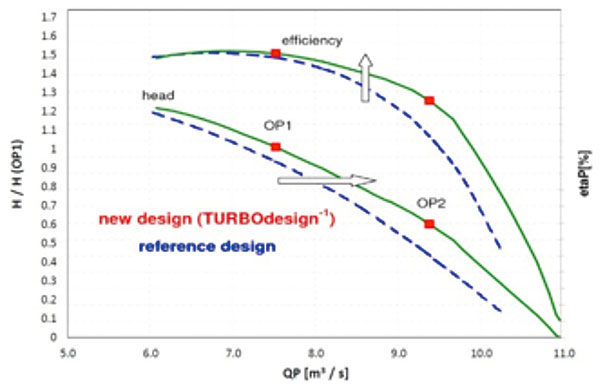
Figure 3. Model test result—head and efficiency comparison with reference design
Enhancement of Cavitation Limits
Regarding cavitation, the net positive suction head required (NPSHrequired) curve of the reference design had to be shifted to higher flow rates to avoid pressure-side cavitation in the start-up condition, OP2 (see Figures 4 and 5).
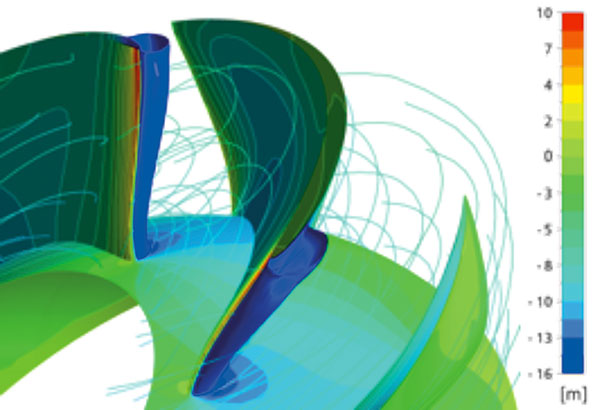
Figure 4. CFD result, reference design (old) at OP2—pressure field and ISO surface of cavitation on the impeller blade surface
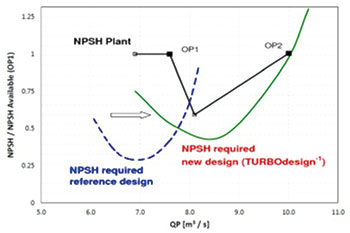
Figure 5. Model test result—NPSH comparison with reference design
Finally, the new design fulfilled the fundamental condition NPSHplant ≥ NPSHrequired for the whole operating range (see Figure 5), and the measurements were completed with a successful acceptance test, witnessed by the manufacturer’s customers. In conclusion, the software considerably supported the pump manufacturer in accelerating the hydraulic design process. P&S

